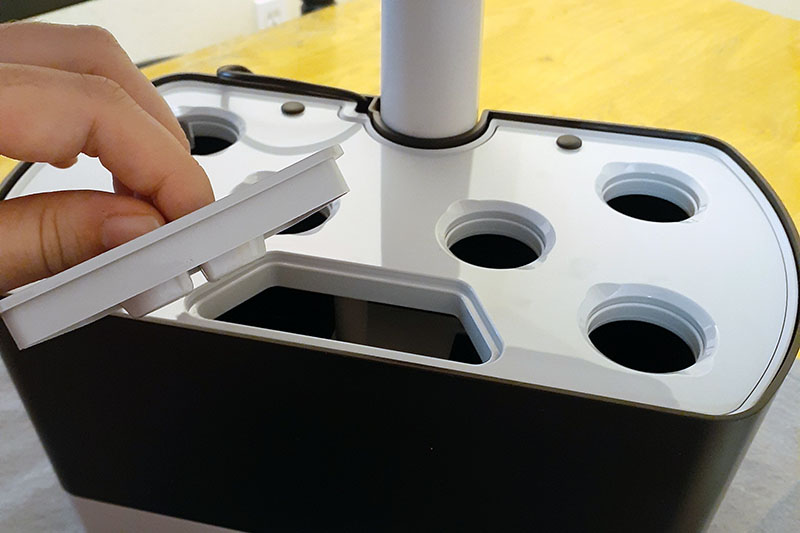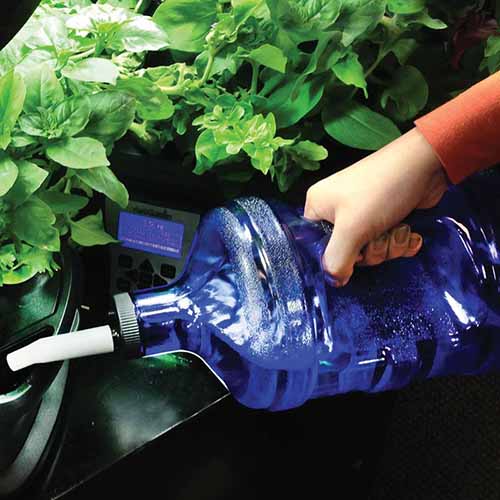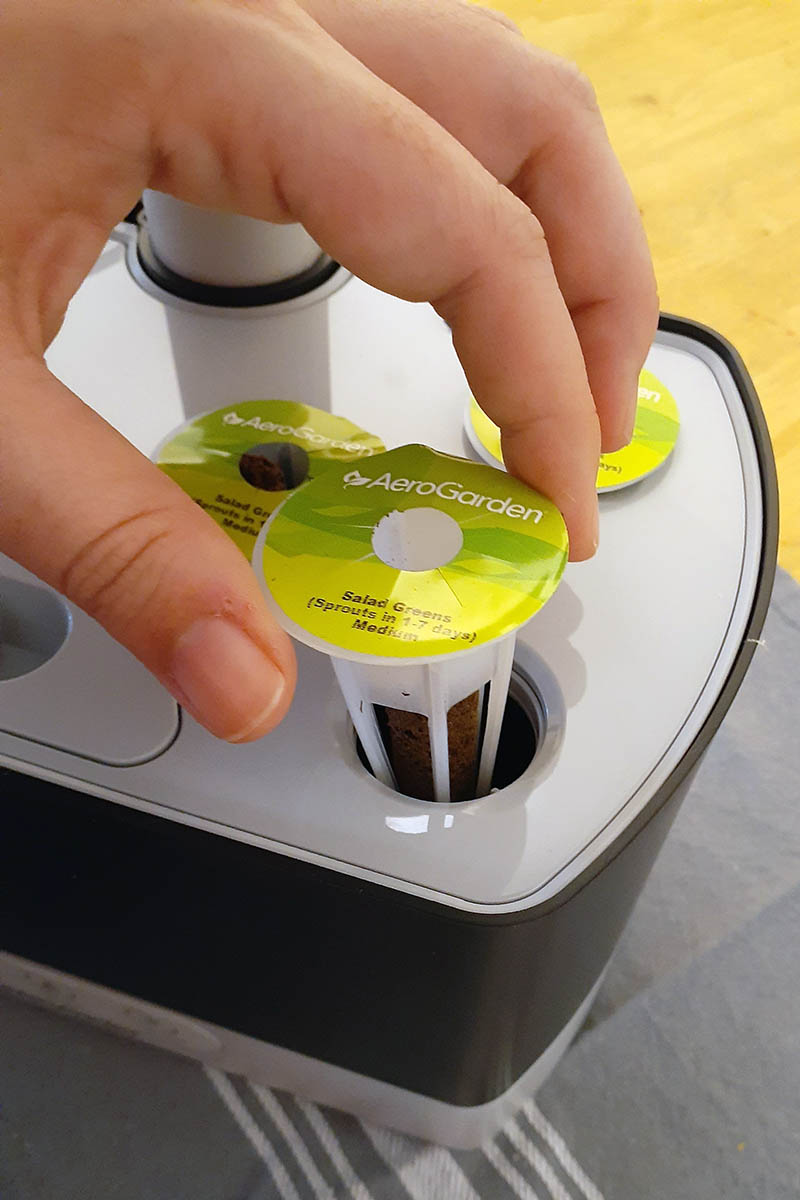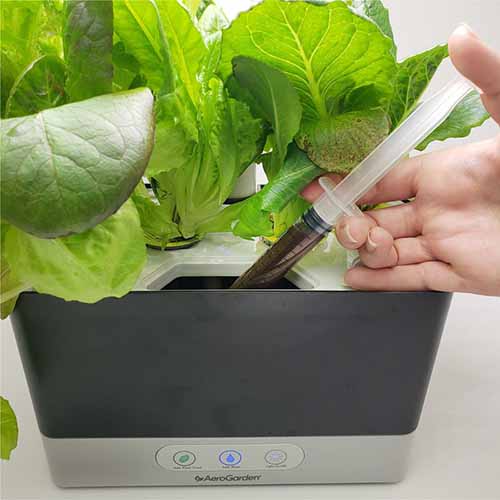Looking for an indoor solution for small-space edible gardening? You’ve come to the right place.
For the first time since I was a teenager, I’m living in an apartment. It has its benefits, such as having less to clean and no outdoor maintenance to do, but there is one large, looming downside – I can’t have a garden here.
Many people might not mind this, as they’re perfectly happy buying all of their food from the grocery store… but I’m a gardener by nature, and as you might imagine, this is a big adjustment for me. My many years of personal experience are fueled by a deep passion for plants.
It hasn’t been easy to continue to fuel that passion here in an apartment without closing my family in among the leaves and vines of a vigorous potted jungle, but one product has provided an opportunity to exercise my green thumb while avoiding overcrowding: the AeroGarden.
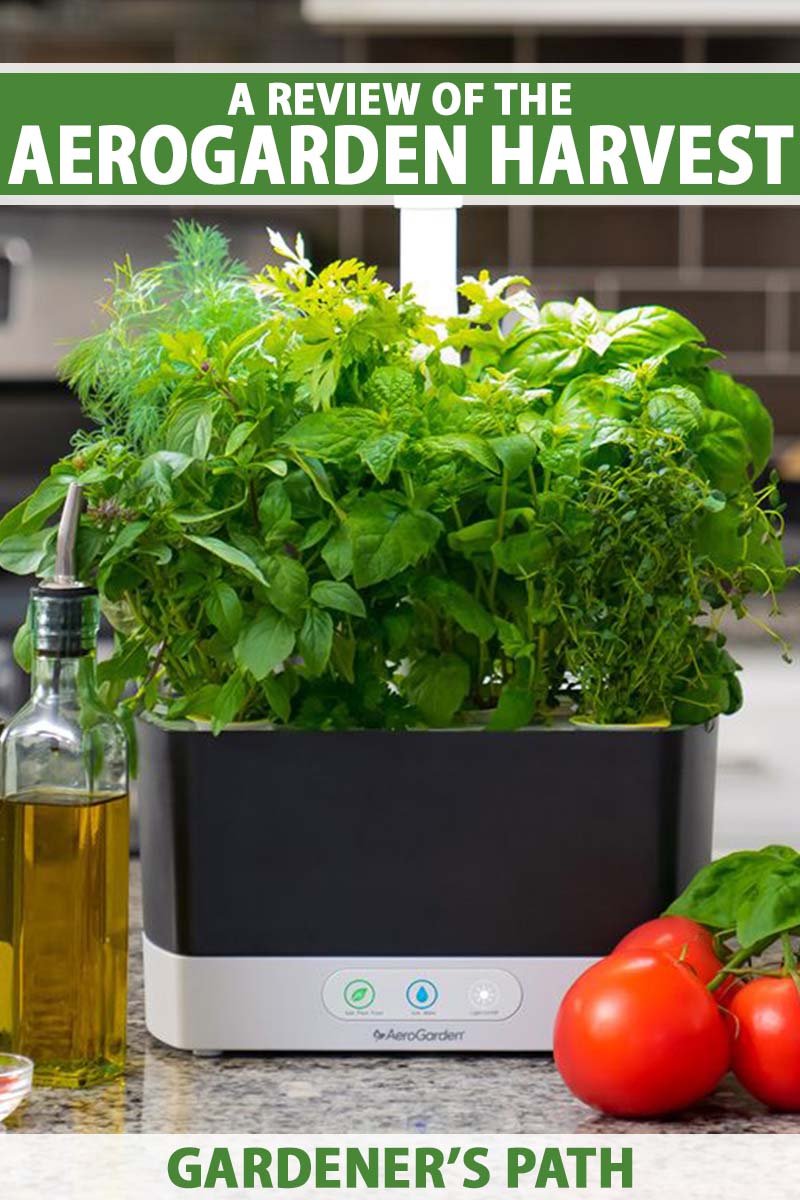
We link to vendors to help you find relevant products. If you buy from one of our links, we may earn a commission.
Perhaps you’ve heard of these hydroponic indoor gardening systems already, or maybe you haven’t. Either way, you’re about to learn all about gardening indoors with one of these cool little units!
What Is an AeroGarden?
If you’ve seen any of the many AeroGarden models in stores or online from retailers such as Walmart or Home Depot, you might have been curious about how they work.
If you haven’t had the opportunity to see one in person, or try it for yourself, then you might not know what to expect – and that’s where we come in, with this review!

AeroGarden Harvest
Each model has enough space to grow a variety of plants, including salad greens and herbs, small peppers, and even tomatoes in select units, such as the Farm 24 XL, available via Amazon.
If you have space on the kitchen counter or a table where you can set up a unit, you can have an indoor mini-garden that’s perfect for growing edible produce hydroponically, no sunny window required.
But let’s get back to the basics. The AeroGarden is essentially an indoor countertop hydroponic system.
The AeroGrow company first introduced their indoor systems in 2006, so they’re tried and true, with over 15 years of market tenure.
For people with the urge to garden who have limited or no outdoor space, or those who live in inhospitable regions for gardening throughout the year or in the cold winter months, they’re the perfect choice.
Hydroponic systems replace soil with water as the growing medium. Plants would normally root in the soil and draw water and nutrients as they grow and develop, but in the AeroGarden and other hydroponic systems, water delivers dissolved nutrients instead.
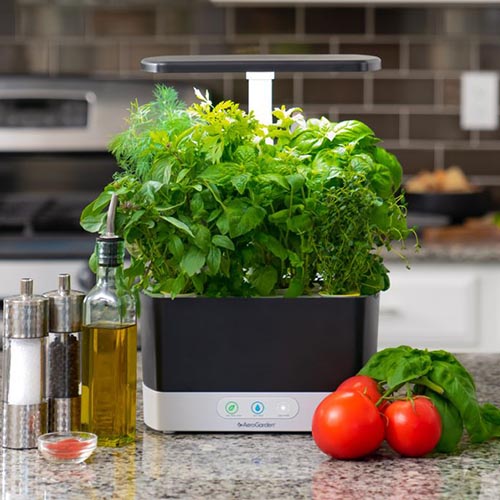
Aerogarden Harvest
The Harvest model is the one that I tested for this review. It is available from a variety of retailers including Amazon, and direct from the manufacturer as well.
You simply install pre-seeded planting cells into holes in a platform where they’ll remain submerged in water, and away you grow!
The Harvest model has spaces for six planting cells but other models can accommodate more or less, such as the Bounty with 12 spaces, the Farm 24 with 24 spaces, or the Sprout with three spaces.
You can also choose to plant fewer cells at a time if you’d prefer, such as when you’re growing large plants with a broad spread, like tomatoes or peppers.
All of the available models come in several versions including basic, elite, plus, and XL, and in slim or 360 versions with a more compact, round footprint.
Most units come in white or black, and some in sage green, all with a modern look and comprised of materials that also make the units easy to clean.
The elite units have additional features, such as a dimmer for the grow light and voice compatibility with Amazon’s remote assistant, as well as a vacation mode. They are also available with a sleek stainless steel finish.
Accessories for the units are also available, such as a water reservoir, and a spacer kit that allows you to close off holes in the planting deck if they’re unused.
The water reservoir, called the AeroVoir, available via Amazon, is designed to refill fresh water as needed rather than having to frequently refill it by hand.
It holds 1.3 gallons of water and has a slim profile that makes it ideal for display on a countertop, measuring 13.5 inches high by 9.5 inches deep and four inches wide.
Let me tell you more about what comes with the Harvest unit, and what’s required to set it up.
What’s Included
The Harvest model is one of the midsize base units made by AeroGarden. It’s great for those with limited counter space because it only takes up about one square foot of area.
I tested two units, each with a different seed kit. Both units come packaged in a box with all of the required parts and accessories included, and seed cells come in packages of six for the Harvest model, pre-loaded with seeds for growing salad greens, herbs, flowers, veggies, or a customized mix of these, curated to your liking.
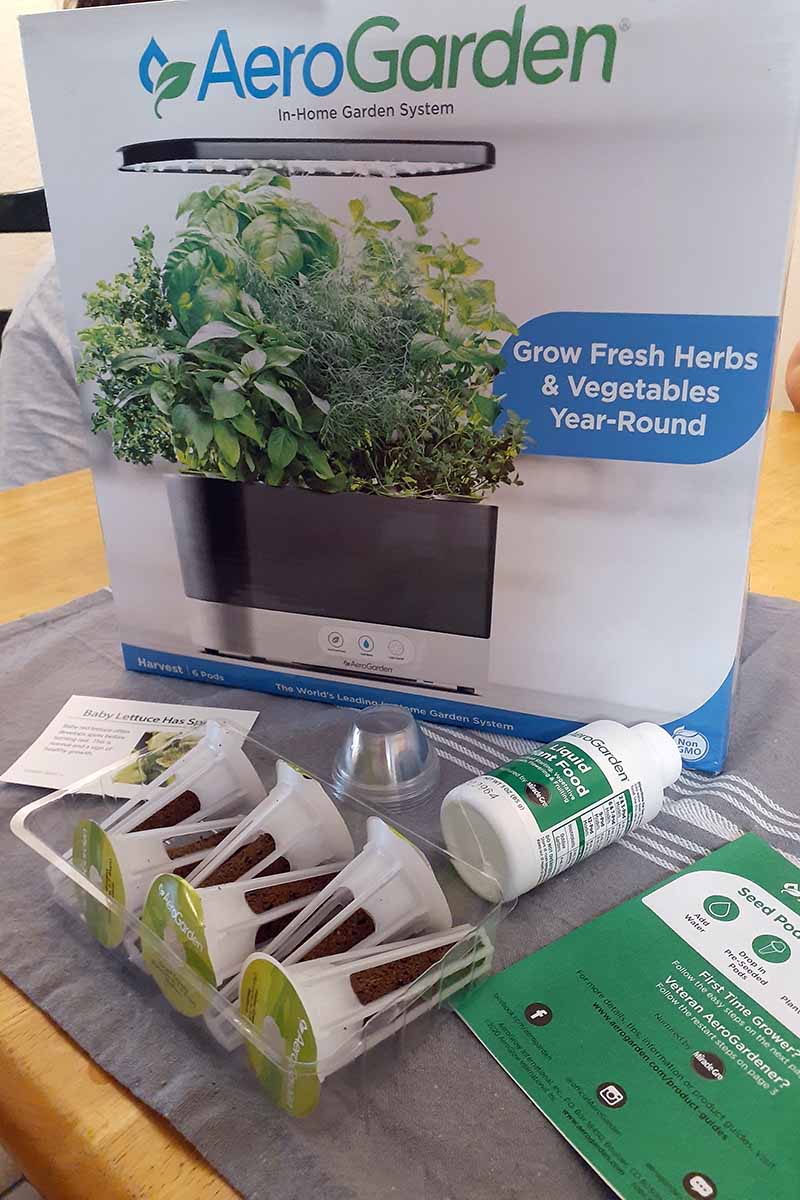
Basic Harvest countertop units are made from plastic, and available in black, white, or sage.
The Harvest is comprised of a lower reservoir, which has controls at the bottom; a removable grow deck with six holes to insert the planting cells; and an attached, adjustable overhead light panel with red, white, and blue 20-watt LED grow lights.
The unit has two indicator lights that flash when the water reservoir is getting low and needs to be refilled, or if it’s time to add more plant food.
The third light on the control panel doubles as a touch-sensitive on/off switch for the overhead light, which may be activated or deactivated by passing a finger over it.
An A/C adapter plug, and a couple booklets containing instructions, tips, and other information, are included with each unit as well.
Comprehensive guidebooks, instructions, and troubleshooting tips are also available via the Resources section of the AeroGrow website, under the headings titled Guides and FAQs.

Seed pod kits may be purchased separately, though the units also include a starter kit with purchase. I received Gourmet Herb and Salad Greens kits.
Other featured seed kits include Cherry Tomatoes, Heirloom Salad, International Basil, Microgreens, Spicy Microgreens, Italian Herbs, Pesto Basil, Spring Flowers, and Cascading Petunias.
You can also choose from Green Pepper and Green Smoothie mixes, Winter Wheatgrass, Swiss Chard, Fairytale Eggplant, and Jalapenos, just to name a few, or choose to customize your own seed kid in a given category – herbs, flowers, veggies, and so on – by selecting each pod that you’d like to include individually.
The Gourmet Herb seed pod kit includes six cells, labeled individually with the name of each variety, including Thai basil, curly parsley, Genovese basil, dill, mint, and thyme.
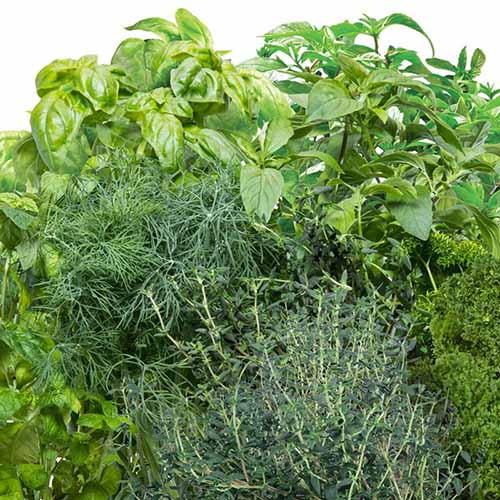
Gourmet Herb Seed Pod Kit
The cells included with the Salad Greens kit have labels attached, but they simply read, “salad greens” rather than noting each specific variety. I consulted the AeroGarden website and found that the kit includes red and green lettuce, butterhead, and romaine varieties.
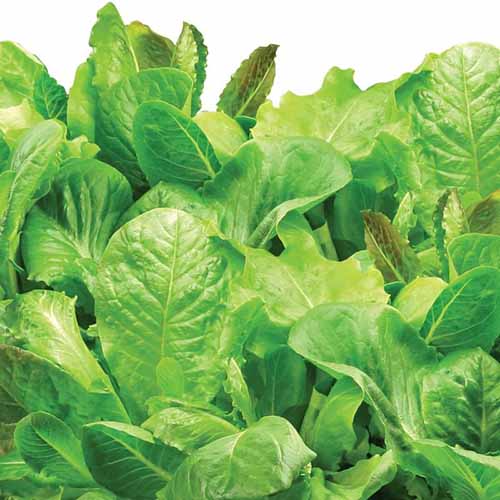
Salad Greens Kit
I’m interested in trying the Japanese Greens for my next round of planting. That kit includes a set of three pods pre-sown with mizuna, tatsoi, and shungiku seeds.

Japanese Greens Kit
A Fresh Tea seed pot kit is also available, which comes in a six- or nine-pod set including mint, chamomile, and lavender.
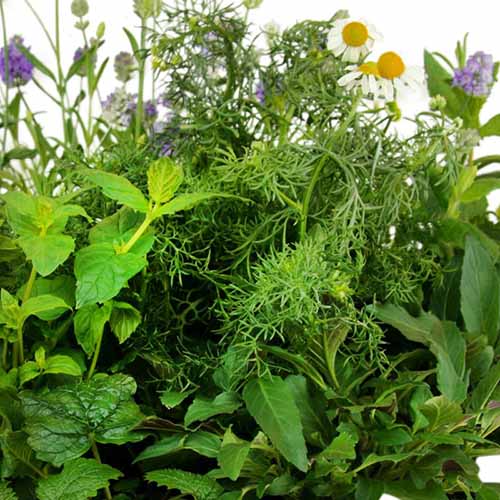
Fresh Tea Kit
Each label is printed with an expected timeframe for germination dependent upon the seed type, such as salad greens which are noted to take one to seven days to germinate, or parsley which is expected to take two to three weeks.
The labels also help to prevent algae from growing in the sponges and water reservoir, which can damage the plants’ roots and the mechanical parts of the unit.
Some cells, like the ones sown with herb seeds, also indicate the anticipated mature size of the plant as small, medium, or large. This helps with figuring out where to plant the cells, as the instructions indicate that larger plants should be placed at the back.
Each cell is comprised of a plastic chamber that contains a cylindrical sphagnum peat moss grow sponge, which is dry at the time of receipt.
The seeds are already sown inside the sponge with a dab of sticky solution that holds them in place, so they don’t shift or get lost in shipping.
Unseeded planting cells filled with sponges are also available for purchase, so you can plant the seeds of your choice.
The Grow Anything seed pod kit comes with everything you need – including plant food, grow domes, and protective labels to top the cells.
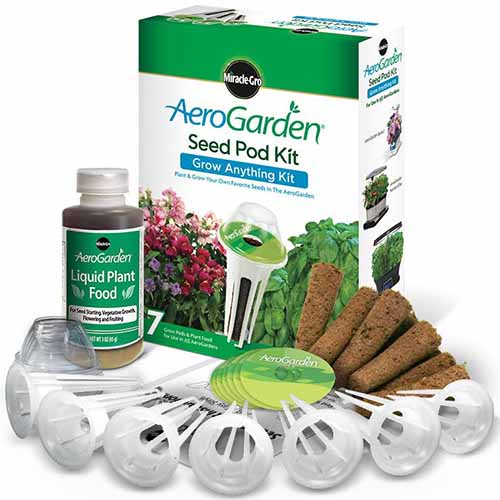
Grow Anything Seed Pod Kit
You could purchase some day-neutral strawberry seeds, for example, and plant them in the sponges to grow your own berry patch on the kitchen counter! Strawberries are commonly chosen for hydroponic growing.
A small bottle of Miracle-Gro liquid plant food, small plastic humidity domes to place over each cell for sprouting, and a booklet of instructions for planting are also included with each seed kit.
Large liter-size bottles of plant food are also available direct from AeroGarden. The liquid fertilizer has an NPK ratio of 4-3-6.
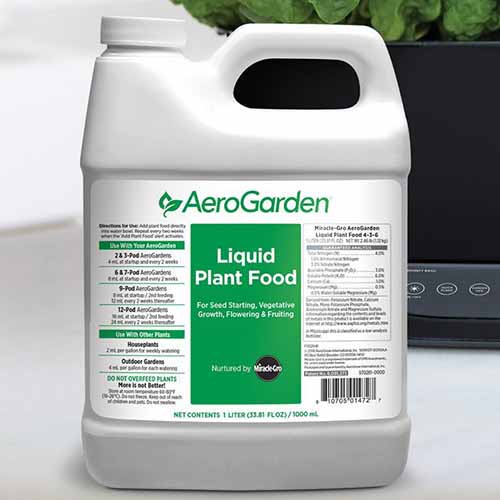
Liquid Plant Food
The AeroGarden limited warranty covers any defects in materials or workmanship for one year from the date of original purchase.
Warranty claims may be processed by contacting AeroGrow customer service, and you can feel free to contact them via the website with any questions you may have as well.
All told, I was excited to get started, and I employed the help of my children to begin assembling the kits.
First Impressions
The Harvest countertop unit is smaller than what I had pictured before receiving it, and very lightweight before it has been filled with water.

